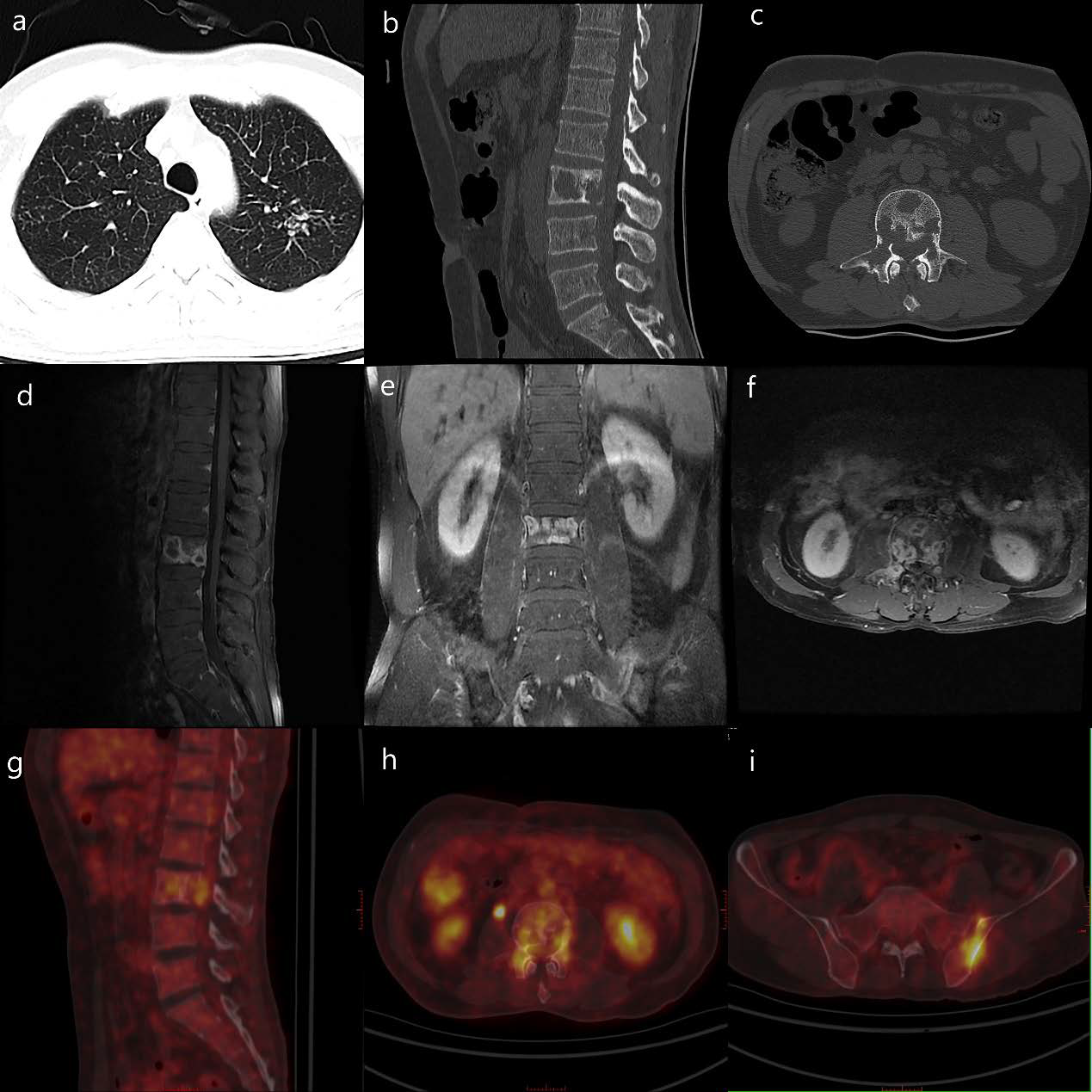Atypical Osteolytic Lumbar Tuberculosis Similar To Malignant Tumor: A Case Report
DOI:
https://doi.org/10.3941/jrcr.5588Abstract
Typical spinal tuberculosis is characterized by vertebral bone destruction, paravertebral abscess formation, and narrowing of the intervertebral disc space, which are readily identifiable and diagnostically conclusive on imaging. In contrast, atypical spinal tuberculosis lacks these hallmark imaging features, making diagnosis challenging and increasing the likelihood of misdiagnosis. Single vertebral involvement is the most common presentation among atypical forms of spinal tuberculosis, typically manifesting as localized lesions within the vertebral body or its attachments. Osteolytic involvement of both the vertebral body and posterior structures is relatively rare. Due to the absence of specific clinical signs, distinguishing this condition from spinal neoplasms can be difficult, which often leads to misdiagnosis. This report discusses a case of spinal tuberculosis with a single vertebral body involvement, where the primary symptom was progressive low back pain in a 59-year-old patient. The lesion involves the posterior part of the vertebral body and its associated structures while sparing the intervertebral disc. The imaging and clinical manifestations closely resemble those of a tumor. After Positron Emission Tomography-Computed Tomography and two pathological examinations, the diagnosis of atypical lumbar spinal tuberculosis was confirmed. The patient was treated with anti-tuberculosis medication and spinal fixation surgery, with satisfactory therapeutic outcomes. Two years of follow-up revealed satisfactory recovery of the vertebral body and its attachments. This case highlights the diagnostic challenges associated with atypical spinal tuberculosis, particularly in the context of osteolytic lesions that mimic malignant tumors.

Downloads
Published
Issue
Section
License
Copyright (c) 2025 Journal of Radiology Case Reports

This work is licensed under a Creative Commons Attribution-NonCommercial-NoDerivatives 4.0 International License.
The publisher holds the copyright to the published articles and contents. However, the articles in this journal are open-access articles distributed under the terms of the Creative Commons Attribution-NonCommercial-NoDerivs 4.0 License, which permits reproduction and distribution, provided the original work is properly cited. The publisher and author have the right to use the text, images and other multimedia contents from the submitted work for further usage in affiliated programs. Commercial use and derivative works are not permitted, unless explicitly allowed by the publisher.





